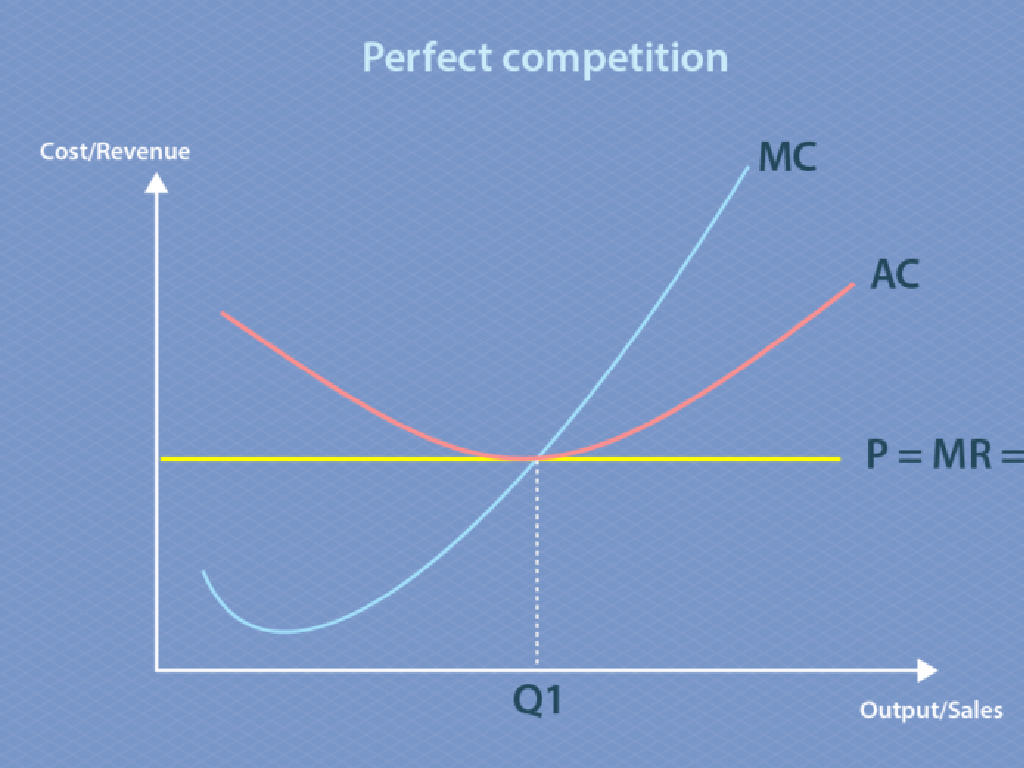Industrialization In The Gilded Age
Subject: Social studies
Grade: Eighth grade
Topic: The Gilded Age
Please LOG IN to download the presentation. Access is available to registered users only.
View More Content
Welcome to the Gilded Age!
– Exploring the Gilded Age
– A period of rapid economic growth and social change in the late 1800s.
– Decoding ‘Gilded’
– ‘Gilded’ implies something shiny on the outside but made of cheaper material inside.
– Industrialization overview
– The rise of factories and mass production transformed the U.S.
– Impact on society and economy
– Led to urbanization, wealth for some, but often poor working conditions.
|
This slide introduces students to the Gilded Age, a term coined by Mark Twain to describe the post-Civil War era in the United States characterized by rapid industrialization and economic growth. The term ‘Gilded’ is metaphorical, suggesting that the period was glittering on the surface but had underlying issues, such as social inequality and corruption. Industrialization brought significant changes, including the rise of factories, the growth of cities, and the expansion of the railroad. While it led to increased wealth and the creation of jobs, it also resulted in challenging living and working conditions for many. Discuss the contrasts of the era and encourage students to think critically about the implications of rapid economic growth.
The Rise of Industry in the Gilded Age
– Defining Industrialization
– The shift from manual labor to machine-based manufacturing
– Titans of Industry
– Influential leaders like Carnegie and Rockefeller
– Factory Work Transformation
– From artisan to assembly line: changes in production methods
– Impact on Workers’ Lives
– Longer hours, repetitive tasks, and the rise of labor unions
|
This slide aims to introduce students to the concept of industrialization during the Gilded Age. Begin with a definition of industrialization, emphasizing the transition from hand production to complex machinery. Highlight key figures such as Andrew Carnegie and John D. Rockefeller, who played pivotal roles in the rise of industry. Discuss the transformation of work life, noting the shift from skilled artisanal work to unskilled factory labor on assembly lines. Address the impact on workers, including the increase in work hours, the monotony of tasks, and the subsequent emergence of labor unions fighting for workers’ rights. Encourage students to consider both the positive and negative effects of industrialization on society.
Innovations of the Gilded Age
– Tech advances in the Gilded Age
– Railroads, telegraph, electricity transformed society
– Inventions’ impact on daily life
– Easier communication, travel, and new jobs emerged
– Thomas Edison’s contributions
– Invented the phonograph, light bulb, motion picture camera
– Alexander Graham Bell’s influence
– Invented the telephone, revolutionizing communication
|
This slide highlights the significant technological advancements during the Gilded Age and their profound impact on society. Emphasize how inventions like the telegraph and the railroad shrank distances and made communication and transportation much more efficient. Discuss how Edison’s and Bell’s inventions, such as the light bulb and the telephone, respectively, changed everyday life, enabling people to work longer hours and communicate over long distances instantly. Encourage students to think about how these inventions still affect our lives today and to consider the role of innovation in societal progress.
Urbanization During the Gilded Age
– Mass migration to urban centers
– People moved to cities for factory jobs, changing the landscape of America.
– Challenges of urban living conditions
– Overcrowding led to tenements, poor sanitation, and health issues.
– Growth and expansion of cities
– Cities grew outward and upward with skyscrapers and expanded city limits.
– Development of public services
– Introduction of services like police, fire departments, and public transportation.
|
This slide aims to discuss the phenomenon of urbanization during the Gilded Age. Emphasize the massive influx of people to cities in search of employment, which was primarily driven by the boom in industrial jobs. Highlight the living conditions in urban areas, including the overcrowding, tenement housing, and sanitation challenges that residents faced. Discuss the physical expansion of cities, marked by the construction of skyscrapers and the extension of city boundaries. Lastly, touch on the development of essential public services that arose to meet the needs of the growing urban population, such as police and fire departments, as well as public transportation systems. Encourage students to think about how these changes in urbanization still impact our lives today.
The Labor Movement During the Gilded Age
– Harsh working conditions
– Long hours, low pay, unsafe environments
– Emergence of labor unions
– Unions formed for workers’ rights and better conditions
– Notable strikes of the era
– Strikes like the Haymarket Affair highlighted struggles
– Impact on labor rights
– Strikes led to labor reforms and better working conditions
|
This slide aims to educate students on the labor movement’s significance during the Gilded Age. It’s crucial to discuss the poor working conditions that workers endured, including long hours, low wages, and unsafe workplaces. Highlight the formation of labor unions as a response to these conditions, with the goal of securing better rights and treatment for workers. Discuss significant strikes, such as the Haymarket Affair, and their outcomes, emphasizing both the successes and the setbacks. Conclude with the impact these movements had on labor rights, setting the stage for future reforms. Encourage students to reflect on how these historical events relate to the current state of labor rights.
Monopolies and Trusts During the Gilded Age
– Defining monopolies and trusts
– Monopoly: Single company dominates, Trust: Firms combine to reduce competition
– Empire building by industrial leaders
– Tactics like buying competitors, securing resources, or forming alliances
– Monopolies’ impact on consumers
– Can lead to higher prices, less choice for consumers
– Effects on small businesses
– Small businesses may struggle to compete, leading to closures or buyouts
|
This slide explores the concepts of monopolies and trusts, which were prevalent during the Gilded Age. Monopolies occur when a single company has significant control over a particular industry, while trusts are groups of firms that combine to exert similar control. Industrial leaders often expanded their empires through aggressive strategies such as buying out competitors, securing exclusive access to resources, or forming strategic alliances. This consolidation of power had a profound impact on consumers, often resulting in higher prices and fewer choices due to reduced competition. Small businesses faced significant challenges competing against these large entities, sometimes being forced to close or sell to the monopolies. Discuss the ethical considerations and the push for antitrust laws to regulate these business practices.
Social Changes During the Gilded Age
– Widening wealth gap
– Disparity increased, with tycoons amassing fortunes and workers facing poverty.
– Rise of the middle class
– Growth in jobs like clerks and managers created a new social tier.
– Social and cultural transformations
– Shifts included urbanization, leisure activities, and changes in family dynamics.
|
This slide examines the significant social changes during the Gilded Age, a period of rapid industrialization and economic growth in the United States. The era saw a stark increase in the gap between the wealthy elite and the working poor, partly due to industrialists’ vast fortunes and the exploitation of labor. Additionally, the emergence of the middle class, driven by new employment opportunities in burgeoning industries and services, began to change the social structure. Social and cultural shifts were also evident as more people moved to cities, and changes in technology and society led to new forms of entertainment and alterations in traditional family roles. Discuss with students how these changes reflect the complexities of the Gilded Age and the interplay between economic growth and social dynamics.
Class Activity: Industrial Tycoon Simulation
– Role-play as industrial tycoons
– Manage factories and workers
– Balance worker welfare with productivity
– Allocate resources strategically
– Invest in materials, technology, and labor
– Reflect on industrialization impacts
– Discuss the pros and cons post-activity
|
In this interactive class activity, students will step into the shoes of Gilded Age industrial tycoons to experience the complexities of managing burgeoning industries. They will make decisions on factory management, worker treatment, and resource allocation, mirroring the challenges faced during the Industrial Revolution. This simulation will help students understand the balance between economic growth and social responsibility. Provide guidance on how to simulate a factory setting and offer examples of decisions they may face, such as dealing with labor strikes or investing in new technologies. After the activity, lead a discussion on the benefits and drawbacks of industrialization, encouraging students to consider its impact on society, economy, and the environment.
Reflecting on the Gilded Age
– Recap of the Gilded Age
– Era’s impact on modern America
– Innovations and policies from this era laid the groundwork for today’s economy.
– Lessons from the Gilded Age
– Consider the social and economic disparities that emerged.
– Reflection on industrial growth
– How did rapid industrialization change society and work?
|
As we conclude our study of the Gilded Age, it’s important to reflect on how this pivotal period in American history set the stage for the modern nation we live in today. The era’s rapid industrialization and economic expansion brought about significant changes in technology, society, and government. Students should understand the lasting effects of this era, including both the positive advancements and the challenges such as labor struggles and social inequality. Encourage students to think critically about how the lessons learned from the Gilded Age can apply to current issues in our society, particularly in the context of economic policy and labor rights.






